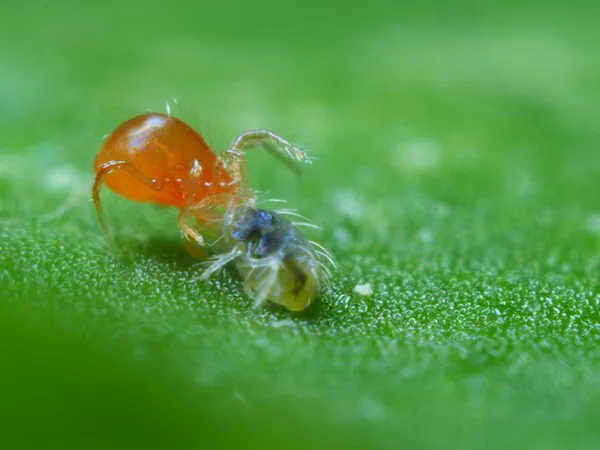Two-spotted spider mite can be a challenging and persistent pest in glasshouse tomato crops – but it’s no match for our Phytoseiulus-System. “The voracious predator Phytoseiulus persimilis eats all stages of the pest, getting hotspot quickly under control," says Biobest advisor, Nick Nagels.
“Now temperatures are rising, two-spotted spider mites (Tetranychus urticae) can develop rapidly in greenhouses. While the range of available chemical crop protection agents is diminishing, the pest continues to develop resistance to those remaining. Phytoseiulus-System offers a successful biological alternative.”

Big appetite
Nick advises growers to monitor their tomato crops carefully and take quick action once the first spider mites appear. "As soon as the pest is spotted, Phytoseiulus-System should be introduced,” he says. “We recommend sprinkling the predatory mites near and around the pest hot spots in the crop.
“A single one of these predatory mites can eat around 20 spider mite eggs, 13 protonymphs, or 5 adult spider mites a day. Due to its healthy appetite and rapid population growth, the Phytoseiulus population grows faster than that of the spider mite. To encourage good predator development in the crop, it is important the relative humidity is about 70%.”
Depending on the pest pressure, several treatments of the Phytoseiulus-System may be required.
Consult before spraying
“If the pest population pressure is too high, some growers still opt for a chemical treatment,” says Nick. “We advise customers to contact their advisor first, as some of these chemical agents have side effects that negatively impact the biology in the greenhouse.”
 Biobest
Biobest